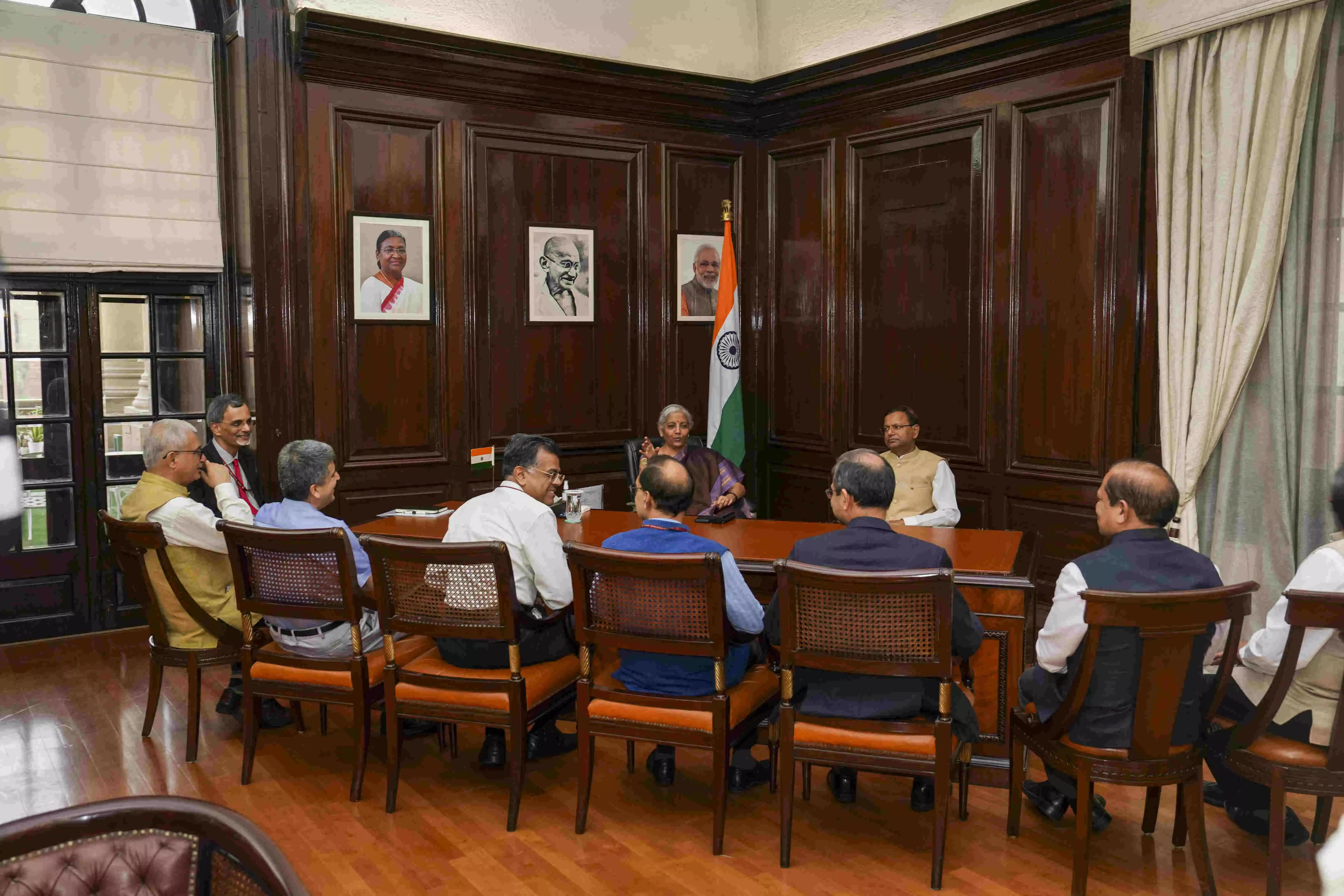Blueprint for sustained growth
The Union Budget 2024-25 will likely focus on tax relief for the middle class, infrastructure investments, and strategic allocations for health, education, defence, and green energy; writes Sambhav Kumar

As Finance Minister Nirmala Sitharaman gears up to present her seventh consecutive budget on Tuesday, all eyes are on the potential roadmap for transforming India into a developed nation by 2047. This budget is particularly significant, not just for its policy content, but also for its symbolic representation of the Modi administration’s long-term vision for the country. With a detailed 10-year performance review expected, this budget aims to balance fiscal prudence with ambitious growth targets.
Middle-class tax relief: a possibility?
One of the most eagerly anticipated aspects of the budget is the potential tax relief for the middle class. The government has hinted at providing financial relief that would increase disposable income for millions of Indians. Given the current tax buoyancy, there is a strong case for such a move, which could stimulate domestic consumption and drive economic growth. Tax relief for the middle class would not only provide immediate financial relief but also signal the government's commitment to inclusive growth.
Fiscal discipline and capital expenditure
The fiscal deficit, a key indicator of the government's financial health, is projected at 5.1 per cent for the current fiscal, down from 5.8 per cent in the previous year. The government aims to reduce this further to 4.5 per cent by FY26. This disciplined approach is crucial for maintaining investor confidence and ensuring sustainable economic growth.
Capital expenditure is another critical area of focus. The planned capital expenditure for this fiscal year is budgeted at Rs 11.1 lakh crore, a significant increase from Rs 9.5 lakh crore in the last fiscal. This increase underscores the government’s commitment to infrastructure development, which is essential for long-term economic growth. By incentivizing states to step up their capital expenditure, the central government aims to create a ripple effect that boosts economic activity across the country.
Revenue projections and GST collections
The budgeted gross tax revenue for 2024-25 stands at Rs 38.31 lakh crore, reflecting an 11.46 per cent growth over the previous fiscal. This includes Rs 21.99 lakh crore from direct taxes and Rs 16.22 lakh crore from indirect taxes. The GST collection is projected to rise to Rs 10.68 lakh crore, an 11.6 percent increase. These figures highlight the government's reliance on robust tax collections to fund its ambitious expenditure plans.
Government borrowing and GDP growth
The government’s gross borrowing budget for the current financial year is Rs 14.13 lakh crore. This borrowing is essential to bridge the fiscal deficit and fund various developmental projects. With more-than-expected dividends from the RBI and financial institutions, the borrowing figures will be closely watched by the market.
India's nominal GDP growth is estimated at 10.5 per cent for the current fiscal, translating to Rs 327.7 trillion. The real GDP growth is projected at 7.2 per cent, according to the RBI. These growth projections are optimistic, considering the expected normal monsoon, improved revenue collections, and a revival in rural consumption.
Spotlight on key sectors: health, education, and defence
Spending on key schemes like NREGA and crucial sectors such as health and education will be under the spotlight. The government is expected to continue its focus on expanding capital investment in infrastructure, construction, manufacturing, and green energy. Dr Trilochan Tripathy, Professor of Finance at XLRI, emphasizes that India is poised for significant growth in these sectors due to the government's sustained emphasis on capital expenditure.
The defence sector, in particular, is set to receive a considerable boost. The government may offer incentives or tax breaks to private players to encourage investment in defence production and supplies. Special schemes to attract MSMEs and startups to support the sector could also be in the offing. Collaborations with foreign companies for technology and knowledge transfer are expected to strengthen the defence production ecosystem further.
Green energy and high-tech manufacturing
The budget is likely to highlight investments in green hydrogen policy, green energy production, public digital platform development, and high-tech manufacturing sectors such as semiconductors and medical devices. These investments are crucial for fostering economic growth, driving innovation, and achieving India’s net zero emission target by 2070.
Comprehensive agricultural policy
A comprehensive agricultural policy aimed at making India self-reliant in food grain production is also anticipated. This policy would support farmers, enhance productivity, and ensure food security for the nation.
A balanced approach for sustained growth
The Union Budget 2024 aims to strike a balance between fiscal discipline and aggressive growth targets. By focusing on capital expenditure, incentivizing private sector participation, and supporting key sectors, the government plans to lay a robust foundation for long-term economic growth. The emphasis on tax relief for the middle class, enhanced infrastructure spending, and strategic investments in high-tech and green sectors underscores a forward-looking approach.
In conclusion, the Union Budget 2024 is a pivotal moment for India as it charts its course towards becoming a developed nation by 2047. By balancing fiscal prudence with ambitious growth plans, focusing on capital expenditure, and supporting key sectors like health, education, and defense, the budget aims to foster sustainable and inclusive development. With potential tax relief for the middle class and strategic investments in green and high-tech industries, this budget seeks to drive economic growth and innovation, setting a robust foundation for India’s future. The nation's eyes are set on a promising trajectory of progress and prosperity.
Views expressed are personal



